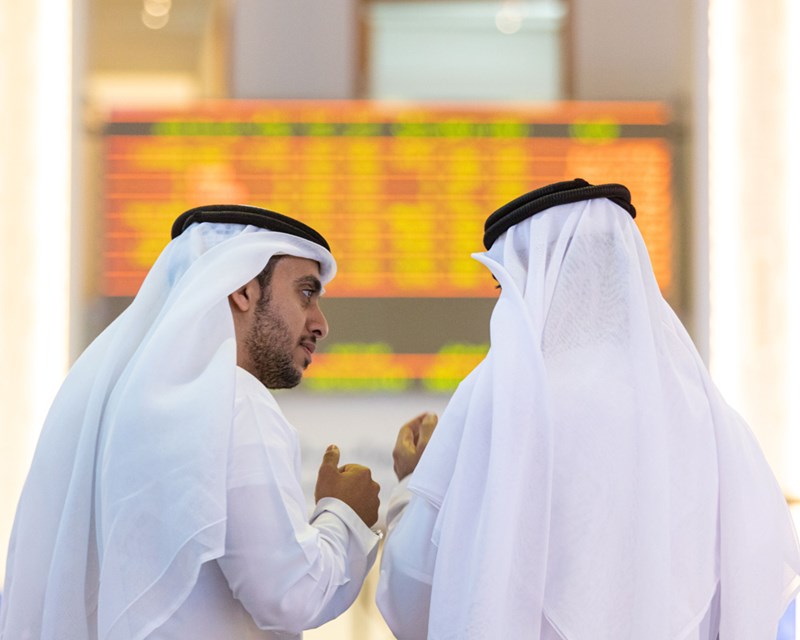Wealth can be a dividing force. The American playwright Mark Twain once said: “You will never truly understand your relatives until you have to share an inheritance” – a nod to the way in which inherited money can plough fault lines through families.
For a small but growing number of families in the Middle East and North Africa – a region where much wealth is first generation, and the number of billionaires grew by 25 per cent in 2017 – this is an emerging worry.
The accumulation of wealth is often first fuelled by a desire to set the family unit up for generations of prosperity. But too many of these families excel in business and wealth creation but do not thrive together as a unit. And because the family unit is typically the custodian for the founder’s legacy and assets, when it breaks down, it leads to the fragmentation and eventual loss of wealth – usually within three generations.
So universal is this experience, that societies the world over have coined a phrase to describe it. In the USA, they refer to ‘shirtsleeves to shirtsleeves’ in three generations; in England, it is ‘clogs to clogs’. Japan has the phrase ‘the third generation ruins the house’, while China offers the literal observation that ‘wealth does not survive three generations’. You get the idea.
The wealth is lost because the family fails, and the shared values and purpose that propelled it to prosperity are also lost. Poor relationships, rather than poor financial planning, are to blame.
So how can wealthy families work together to avoid the generational curse? How can dynasties act to resolve conflict and build a meaningful legacy? And how is strategic philanthropy part of the solution?
Find a common cause
Wealth itself is not a unifying force in a family. This is especially true when assets transition from one generation to the next, to members who have grown up in privilege. Families are rarely driven by financial metrics alone: many are motivated by a sense of responsibility towards their communities and wider society, and see the purpose of wealth as being to enrich others, not just themselves.
Philanthropy offers a way to rally the family around a common goal and embed shared values. It shows younger members that wealth is not an identity, but a tool that can be used to make the world a better place. On a practical note, it is an opportunity to involve them in the long-term stewardship of family assets, and gives an early grounding in efficiency and impact.
Find a higher purpose for your family to circle around. Tackling modern slavery? Supporting refugees? Putting your family's wealth to work for good can be transformative.
Character, then competence
Globally we are on the brink of a major wealth transition. According to a recent report by UBS, almost 40 per cent of current billionaire wealth – around $3.4tn – is set to transition to heirs over the next two decades. Both for high-net-worth families, and for wider society, much depends on their ability to use their influence and capital wisely.
The most important qualification for robust family leadership is sound character, which is shaped from childhood through a lifetime of experiences. Teach children from a young age about your family values and journey – who we are, and how we got to where we are; the good and the bad. Find opportunities for hands-on learning. Give them small amounts of capital to manage for philanthropic causes and commercial investment and let them learn from their mistakes.
Create the freedom for them to discover personal gifts and passions and to work out who they are, free from family expectations.
Experiment with what works best for your family. I recently learned of the head of a prominent GCC family who took his eldest son for a drive into the desert, leaving him in the care of a tribal family for several months. His son gained a deep understanding and appreciation of the traditions and culture of his country, which had in turn shaped the family journey.
United we stand
The family unit is the custodian of family wealth: its resilience is essential. Maintaining this doesn’t just mean employing formal governance mechanisms such as family constitutions, leadership structures and succession plans – although these are necessary. More critical is spending time together, communicating well and building relationships that stretch across generations. This becomes harder as families grow and spread out across the world.
Help to forge close ties by establishing family traditions and rituals, and by sharing experiences together. Some families help less privileged communities during Ramadan, or volunteer within local charities. Others join together to visit development projects funded by their foundation or family office.
Your family’s giving is a powerful tool to help strengthen the wider unit. Don’t see it as a sideshow to the main game.
Align and engage
When you have agreed a unifying family purpose, express it through what you invest in. This approach is not limited to philanthropic causes without a financial return. Your capital can deliver great social impact and financial returns when invested shrewdly – as family offices are increasingly realising. A third are now engaged in impact investing, according to the 2018 Global Family Office Report, and nearly half plan to boost their sustainable investments over the next 12 months – a push largely attributed to purpose-led millennials moving up through the ranks.
If you have not yet established a family group to develop your philanthropic strategy and oversee giving, then do so. It will engage the entire family and help them to express your shared purpose and values.
United and flourishing families are far better financial stewards – and are more likely to make philanthropic and investment decisions that create a multi-generational legacy. — PA

About the writer
Andrew Doust is the founder of advisory firm Plenitude Partners. He is also the co-founder of Kore Venture, a nonprofit programme which helps young, high-net-worth individuals to prepare for wealth and leadership. Doust is the former vice president of strategy at Legatum, a private investment firm, where he helped lead its philanthropic work.






